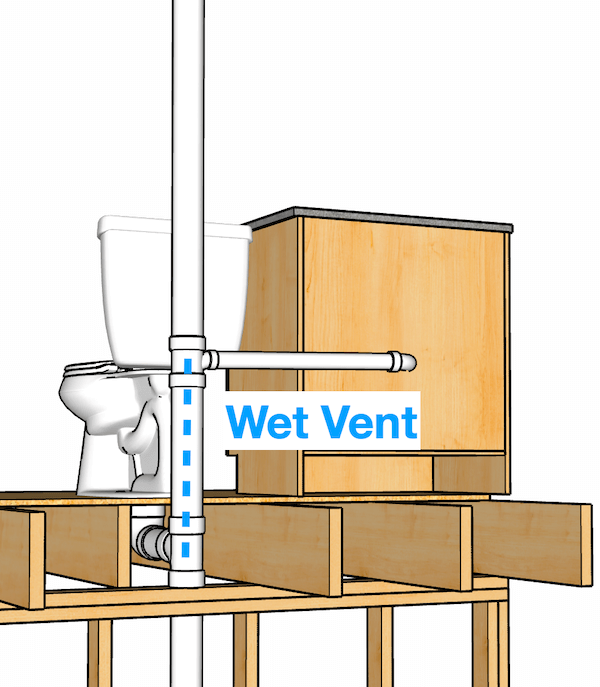What are your thoughts about Essential Plumbing Vent Pipes: Understanding Their Role?

Appropriate ventilation in pipes systems is commonly overlooked, yet it is crucial for preserving the functionality and safety of your home's pipes. Ventilation assists regulate atmospheric pressure, protect against the build-up of damaging gases, and guarantee the efficient elimination of waste. In this overview, we will discover the relevance of correct plumbing air flow, just how it functions, and the benefits it brings to your pipes system.
Exactly How Ventilation Functions in Pipes Equipments
Atmospheric Pressure Policy
Proper air flow maintains well balanced atmospheric pressure within the plumbing system. When water streams via pipelines, it displaces air. Without ample ventilation, this displacement can produce unfavorable pressure, leading to slow down drains pipes or siphoning of water from traps, which can cause unpleasant smells to leak right into the home.
Preventing Drain Gas Buildup
Among one of the most essential functions of plumbing vents is to stop sewage system gases, such as methane and hydrogen sulfide, from accumulating within the home. These gases can posture serious health dangers and are highly flammable. Vent pipelines allow these gases to get away safely outside.
Aiding in Waste Removal
Air flow helps in the reliable elimination of wastewater by stopping airlocks in the water drainage system. When air can move openly via the vents, it enables water and waste to stream efficiently with the pipelines, minimizing the risk of clogs and back-ups.
Advantages of Proper Ventilation
Boosted System Effectiveness
Correctly aerated pipes systems run extra effectively, with less clogs, faster draining, and less stress on the pipes. This performance prolongs the life expectancy of the plumbing system.
Improved Air High Quality
By stopping drain gases from entering your home, proper ventilation adds to better interior air top quality, making your living setting healthier and much more comfy.
Avoiding Water Damage
Appropriate ventilation helps avoid water from being siphoned out of traps, which can lead to sewage system gases entering the home and causing water damage over time.
Steps to Make Sure Appropriate Air Flow
Consulting Pipes Codes
Constantly seek advice from neighborhood pipes codes when making or customizing your plumbing system. These codes offer the needed standards for proper venting and ensure your system satisfies safety and security standards.
Routine Inspection and Maintenance
Routine examinations can help recognize possible air flow issues prior to they end up being major issues. Maintenance jobs, such as cleaning vent pipelines and looking for obstructions, are important for keeping the system in good working order.
Specialist Installation
For brand-new installments or significant adjustments, it's wise to employ a professional plumbing technician. They have the expertise to make certain the air flow system is appropriately created and installed according to code.
Comprehending Air Flow in Pipes
Ventilation in plumbing describes the network of pipes that permit air to move with the drainage system. These vents serve numerous purposes, consisting of controling atmospheric pressure within the pipes, protecting against sewer gases from getting in the home, and assisting in the smooth circulation of wastewater.
Kinds Of Plumbing Vents
Key Heap Vent
The major stack air vent, additionally called the air vent pile, is the key air vent in a pipes system. It prolongs from the major drain line up with the roof, enabling gases to run away and fresh air to go into the system.
Branch Vent
Branch vents link to the main stack vent and offer specific components, such as sinks, commodes, and showers. These vents make certain that each component has ample air flow to function appropriately.
Air Admittance Valve (AAV).
An Air Admission Valve (AAV) is a one-way shutoff that enables air to get in the pipes system without the demand for a standard air vent pipeline prolonging via the roofing system. AAVs are typically utilized in improvements or areas where mounting a common vent is impractical.
Signs of Poor Air Flow in Plumbing.
Slow Draining Fixtures.
If your sinks, bathtubs, or toilets are draining pipes gradually, maybe an indication of inadequate air flow. Insufficient air flow can develop a vacuum cleaner result, making it hard for water to drain appropriately.
Gurgling Sounds.
Gurgling noises coming from drains are frequently a result of air being drawn with water catches due to adverse stress in the pipelines. This is a clear indication of inadequate ventilation.
Undesirable Smells.
Drain smells inside your home are a red flag that your plumbing system is not appropriately aerated. This can imply that sewage system gases are not being adequately vented outside, bring about potentially harmful conditions.
Usual Ventilation Mistakes.
Insufficient Vent Sizing.
Using undersized vent pipelines can cause inadequate air flow and stress inequalities in the system. It's vital to utilize vents that fulfill the certain needs of your pipes system.
Improper Vent Positioning.
Placing vents as well far from the fixtures they offer can minimize their performance. Correct placement makes certain that air can move openly and effectively via the system.
Ignoring Code Needs.
Building ordinance give certain standards for plumbing air flow. Neglecting these codes can lead to a system that falls short to function appropriately and might lead to pricey repairs or health hazards.
Verdict.
Proper ventilation is an important component of any kind of pipes system, making sure that it works effectively and securely. By understanding the importance of air flow, identifying the indications of inadequate ventilation, and taking actions to maintain your system, you can stop pricey concerns and shield your home's air top quality.
What is a Plumbing Vent and it's used for?All plumbing systems in residential and commercials construction have a plumbing vent. It doesn’t just vent unwanted odors from the drainage system to the outside; it actually serves an important purpose by supplying air to the system.
The plumbing drainage system is actually called a drainage, waste and vent (DWV) system. When water flows down the piping, an air supply (vent) is needed to allow the water to flow. Think of the vertical pipe as a drinking straw. If you plug the top end of a straw, liquid won’t drain from it.
The DWV system in your building consists of a series of pipes connected to each fixture; they extend above each fixture, and the system terminates at an open pipe that extends through the roof. This piping allows air into the system and prevents unbalanced pressures in the piping.
?The vent also prevents the system from drawing water out of a trap at the fixture with the characteristic “glug-glug-glug” as the drain gasps for air. Plumbing traps should drain smoothly and never “glug” or gasp for air.
If you have a drain that empties slowly or gurgles as it drains, this may indicate a venting problem. If you flush a toilet and the sink gurgles, there’s definitely a vent problem. It is good idea to have a Plumber check this.
https://www.ameliashomeinspection.com/blog/what-is-a-plumbing-vent-and-its-used-for

I stumbled upon that piece about Why Plumbing Air Vents Are Important while surfing the web. Do you know about somebody else who is inquisitive about What Are Plumbing Vents and Why Are They Important?? Please feel free to promote it. Thanks so much for your time spent reading it.
Call Today